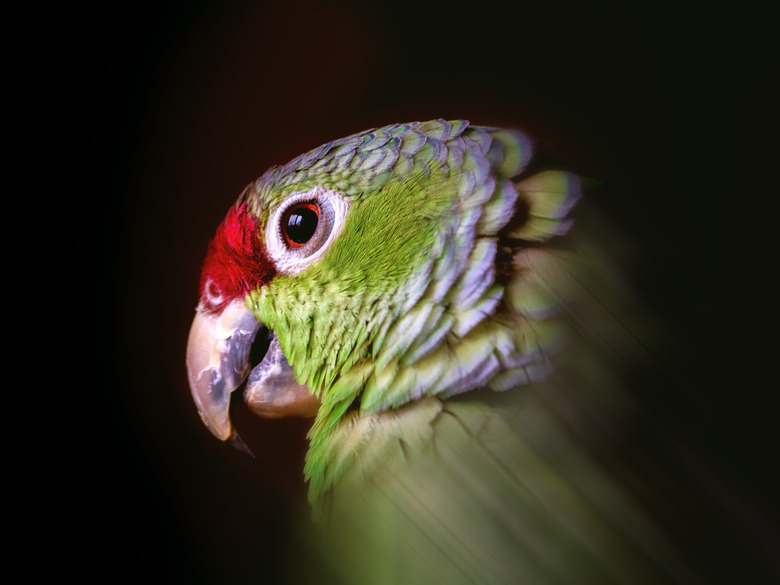What Are The Similarities Between Birds & Mammals?
Most everyone is aware of at least some of the differences between birds and mammals. Whereas birds have feathers, lack teeth and lay eggs, mammals have fur or hair for insulation, possess teeth and give birth to live young. Although birds are more closely related to reptiles than mammals, birds and mammals have several characteristics in common.
Vertebrate animals are a phylum classification in ecology, characterized by a spinal cord and a backbone. The subphylum of vertebrata includes many existing classes of animals: fish (spanning three classes), reptiles (class Reptilia), amphibians (class Amphibia), mammals (class Mammalia), and birds (class Aves). Birds and mammals share a more recent common ancestor from existing in the same subphylum; it was likely around 310 MYA (million years ago) that mammalian and avian lines began to split.
TL;DR (Too Long; Didn't Read)
310 MYA sounds like a long time – and it is – but on the scale of life on Earth it is a relatively recent development.
Warm-Blooded
Warm-Blooded
Both birds and mammals are warm-blooded animals, which means they can maintain a constant body temperature and do not need to rely on an external heat source to stay warm. This similarity lends itself to several other commonalities, such as similar caloric requirements by weight and the ability to remain active in colder temperatures. Cold-blooded animals, such as reptiles, do not have to eat as much, but they also cannot survive colder temperatures. Being warm-blooded also gives birds and mammals the unique ability to live on any landmass on Earth. These adaptations make birds and animals some of the most versatile and widespread classes in the animal kingdom.
Vertebrates
Vertebrates
All mammal and bird species are classified as vertebrates, meaning they have backbones and skeletal systems made of bone. Birds, however, have hollow bones with a crisscrossed matrix for added strength. The hollow bones are lightweight, which allows the bird to take flight, while the structural matrix adds strength to withstand the pressure of taking off and landing.
Heart
Heart
Birds require a lot of energy in order to fly. This also necessitates a circulatory system that is both efficient and effective, so they have evolved a four-chambered heart with two atria and two ventricles, just like mammals. One of the main benefits of this type of circulatory system is that it allows the separation of oxygenated and deoxygenated blood. Other species of animals, such as reptiles, have hearts with fewer chambers, which means both oxygenated and deoxygenated blood have to travel through some of the same chambers — a much less efficient model.
Blood
Blood
The blood of birds and mammals contains both red and white blood cells, called erythrocytes and leukocytes respectively. The red blood cells in both classes of animals contain hemoglobin, a protein containing iron that is responsible for oxygen transport and gives blood its red color. While both classes have erythrocytes, mammals' erythrocytes lack a nucleus, while the erythrocytes of birds do have nuclei. The leukocytes of both classes function in immune regulation.
Breathing
Breathing
Both birds and mammals use the process of cellular respiration to metabolize energy using oxygen and water, but birds have evolved to process energy and oxygen slightly differently. Mammal's respiratory system uses lungs to breathe in and out, taking up oxygen from the air. Meanwhile, birds have lungs and special air sac membranes; the air sacs allow for birds to more quickly take in and expel oxygen from their system.
Parental Care
Parental Care
Another similarity between birds and mammals is that both classes care for their young after they're hatched or born. The length of time varies from species to species, depending on the age that the young are first able to take care of themselves. Female mammals feed their young by lactating; they use mammary glands to produce milk to support their young. Meanwhile, birds will catch, and sometimes pre-digest, food for their young.
Wacky Species
Wacky Species
Throughout evolutionary history, birds, mammals, and all kinds of animals have continued to grow in new and interesting directions. There are flightless birds – like ostriches in Africa, Emus in Australia, and Kiwis in New Zealand; hummingbirds that can hover in the air; and sea faring species of birds – like penguins that only swim instead of fly.
Mammals have an equally zany distribution of features and morphology. Primates – like humans and chimpanzees – evolved to use tools and create languages of communication; monotremes – designations for the platypus and echidna – are egg-laying mammals; and marsupials have a built-in pouch to carry and raise their young.
Cite This Article
MLA
Powell, Jack. "What Are The Similarities Between Birds & Mammals?" sciencing.com, https://www.sciencing.com/similarities-between-birds-mammals-8439713/. 25 July 2023.
APA
Powell, Jack. (2023, July 25). What Are The Similarities Between Birds & Mammals?. sciencing.com. Retrieved from https://www.sciencing.com/similarities-between-birds-mammals-8439713/
Chicago
Powell, Jack. What Are The Similarities Between Birds & Mammals? last modified July 25, 2023. https://www.sciencing.com/similarities-between-birds-mammals-8439713/
